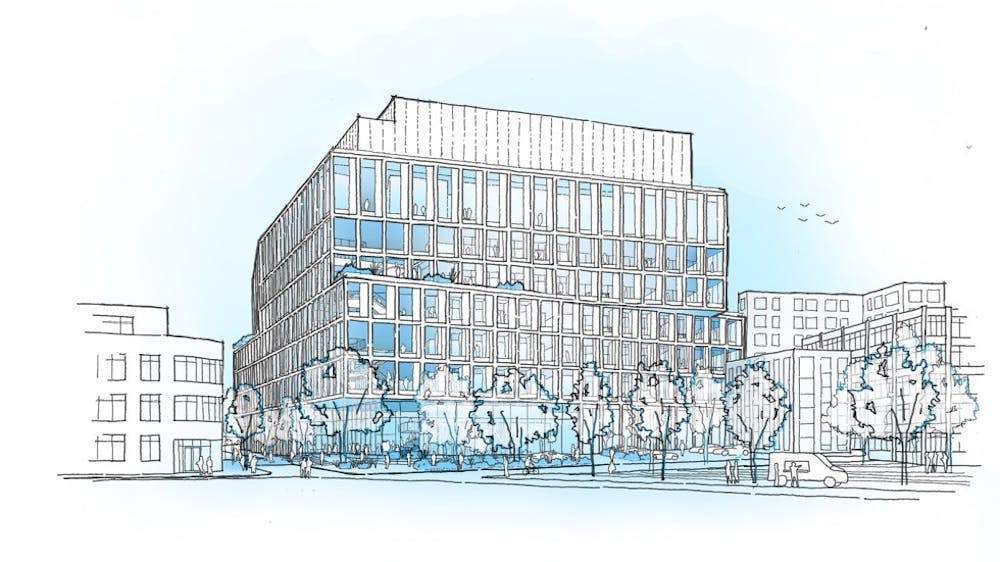The University is set to continue its expansion into Providence’s Jewelry District with the creation of a seven-story lab building on Chestnut Street. The Providence Downtown Design Review Committee greenlit the building designs in December and construction is slated to commence this summer.
Over the past two decades, advancing into the Jewelry District has been a University priority, Russell Carey, Brown’s executive vice president for planning and policy, wrote in an email to The Herald.
The construction of the Warren Alpert Medical School and a variety of other administrative spaces in the early 2000s marked the initial expansion of Brown’s footprint into lower Providence. More recent developments include Brown’s acquisition of a portion of South Street Landing in 2023 and leasing for spaces in the state health lab at 150 Richmond St.
Investing in the area also aligns with the University’s institutional and academic goals of serving the Providence community by supporting economic and residential development, Carey said.
The building will occupy 151-155 Chestnut St., with lab facilities on the second through seventh floors. Located next to Brown’s Laboratories for Molecular Medicine, the proposed building will feature a bridge to connect the second floor of the new labs to the third floor of the existing molecular medicine labs.
According to Joe Mulligan, Providence’s director of planning and development, the project aligns with Providence’s 2012 long-range plan, which requires that new developments receive a variety of different city approvals. In September 2023, the City Plan Commission approved Brown’s inclusion of the lab in the University’s Institutional Master Plan.
Although the University owns the land, the project required approval from the city’s Downtown Design Review Committee to ensure compatibility with the existing landscape. The Planning Department held meetings with Brown to discuss design regulations and requirements, Mulligan wrote in an email to The Herald.
“Brown University has been actively engaged with the community and abutters to respond to their feedback and concerns,” Mulligan wrote. He noted that project planning for the integrated life sciences building required community outreach, discussions with community members and public processes for approval.
“Overall the investments that we’ve made have been very positively received,” Carey wrote.
The construction of the new lab will necessitate the demolition of two existing buildings: 261 Richmond St. — a 1950 building currently owned by Brown — and 233 Richmond St.
Noah Biklen '97, the architect leading the lab’s design, said that the University had originally tried to identify existing sites that could potentially host the facility, but ultimately determined that the project required a new building.
“Removing the existing buildings will allow the creation of interior layouts that will support cutting-edge life sciences research and make best use of the site in terms of creating accessible connections through the block and landscape designs that will help promote an active public realm,” Biklen wrote in an email to The Herald.
“In general, reusing existing facilities for renovation is more environmentally conscious than new construction,” Carey wrote. “But that’s not always going to be possible.”
Biklen said the facility will be the first for which Brown administrators conducted “a full embodied carbon life-cycle analysis for all systems and materials,” targeting nearly 100% renewable energy.
In an effort to integrate itself more naturally into the Providence community, the lab building will include “a connective and accessible ground floor and landscape with varied places to sit and enjoy the outdoors,” Biklen wrote. The building will also feature a lecture hall, cafe and prayer room.
“Downtown is an area of large-scale mixed-use development,” Mulligan wrote. “As a hub for creativity, innovation and progress, the City of Providence welcomes this project.”
Correction: A previous version of this article misstated the address of the state health lab. The lab is located at 150 Richmond St.





